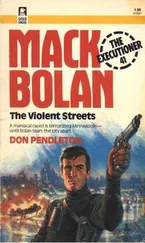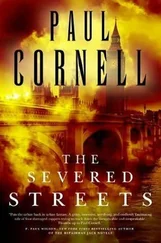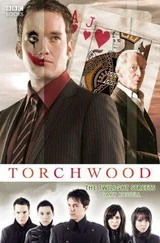“On a number of occasions in this case,” says Polansky, “there is a man named Vincent Booker who is involved with Charlene Lucas and has access to her apartment… Well, this is not Perry Mason and people will not jump up in court and confess to murder. But the story that Robert Frazier is here to tell you will indicate that Vincent Booker committed this crime.”
Polansky continues his rebuttal, explaining that Frazier cooperated in the police investigation, that he voluntarily came forward, but that it soon became clear that the detectives were focusing on him as a suspect to the exclusion of everything else. He didn’t bring in the weapon, true; he was fearful of a handgun charge and these detectives were obviously trying to put the murder on him. And they were doing this after he tried to help them find Lena’s killer.
“Mr. Doan told you about a puzzle and he is right,” says Polansky, finding common ground. “You can tell a picture without seeing all of the pieces, if you’re missing three, or four, or five pieces. But if you’re missing too many pieces…”
In the anteroom, Garvey is vexed by puzzles of a different sort. When the court breaks for lunch, he is deep into the Evening Sun crossword, having battled the morning paper’s puzzle to a draw. Dave Brown is asleep sitting up, the Booker case file in his lap.
Justice pauses for lunch. The detectives leave, they eat, they return to the bench to watch a steady parade of state’s witnesses going in and out of the afternoon session: Lena Lucas’s older daughter, to testify about Frazier’s relationship with her mother and to shoot down the notion that Vincent Booker had access to the apartment; the upstairs neighbor at 17 North Gilmor, to testify to his discovery of the body and place the time of death; the first officer from the Western District, to testify to the preservation of the scene and the recovery of evidence; Wilson, from the crime lab, to bring the scene photos and testify to the attempt to lift fingerprints; Purvis, from the trace section, to testify about the comparison of latent prints and the inability to match any of the lifts from Gilmor Street to anyone other than Charlene Lucas.
When the bailiff finally comes for Garvey, he’s just about done with the Evening Sun, having been stumped by some five-letter French river. Leaving the paper on the bench, Garvey moves toward the witness stand clothed in dark blue pinstripes, the power suit according him the required confidence. The Republican tie, the eyeglasses-ladies and gentlemen of the jury, meet the police department’s vice president for sales and marketing.
“Good afternoon,” says Doan in a stage voice. “How long have you been with the Baltimore City Police Department?”
“Over thirteen years,” says Garvey, straightening his tie.
“Of that thirteen years, how long have you been with the homicide unit?”
“The last three and a half.”
“And would you care to tell the ladies and gentlemen of the jury how many murder cases you’ve handled during that period of time.”
“I’ve been assigned personally to slightly over fifty cases.”
“And,” says Doan, leading, “I assume you have been involved in one way or another in parts of other cases.”
“Numerous investigations,” says Garvey.
Slowly, Doan begins to take the detective through the crime scene at 17 North Gilmor. Garvey describes the apartment, giving special attention to the security features, including the burglar alarm that had been turned off. He provides a detailed description of the scene, and the jury again hears about the lack of forced entry, the nested pile of clothes, the scratches on the headboard suggesting that she was stabbed while lying in bed. Then, at Doan’s direction, Garvey walks over to the jury box, where Doan takes him through the crime scene photos already admitted to evidence.
The photos themselves are always the source of considerable courtroom conflict, with defense attorneys arguing that the depiction of the bloodied victim is unnecessarily prejudicial and prosecutors arguing that the photos have probative value for a jury. Prosecutors usually win the argument, as Doan has in this case. Thus Lena Lucas and her wounds are displayed for the jurors in glossy splendor from a variety of camera angles over Polansky’s continuing objection. The jurors seem impressed.
Garvey is at the jury box for ten minutes before returning to the witness stand, where Doan takes him through the search of the crime scene and the interviews with neighbors. The prosecutor makes a point of asking about street lighting outside the Gilmor Street rowhouse and Garvey describes the sodium vapor light in the middle of the block-an essential foundation for the coming testimony from Romaine Jackson.
“At this time, I have no further questions of Detective Garvey,” says Doan after twenty-five minutes of testimony. “However, I wish to recall him later.”
“You may,” says Gordy. “Cross-examination, Mr. Polansky.”
“For the same reasons, I will restrict my cross-examination to the testimony elicited on direct.”
Fine with me, thinks Garvey, calm and collected on the stand. With just the boilerplate of the crime scene to worry about, he reasons, there won’t be much in the way of controversy this afternoon.
Polansky goes into some detail on the pattern of wounds, prompting the detective to agree that the stab wounds came before the gunshot wound to the head; the defense wounds to the hands prove as much. The defense attorney also spends some time dealing with the empty purse, the broken bag of rice and the empty gelatin capsules on the bedroom floor. “So it would appear, would it not, sir, that whatever assailants attacked and killed Ms. Lucas probably took whatever drugs she had in that pocketbook?”
“Objection,” says Doan.
The judge agrees that the defense attorney’s question is too speculative, but the image of Vincent Booker hovers over the courtroom. Why, after all, would Frazier murder someone to take drugs that were already his? No reason unless, of course, he wanted to make the killing seem like a drug robbery.
Polansky moves forward, chronicling the drug paraphernalia scattered around the crime scene in an effort to make his point another way. He brings Garvey back to the nested clothes. The apartment was very tidy, was it not? Very neat, Garvey agrees.
“The kind of individual who would not take off her clothes and throw them on the floor but would take them off, fold them up and put them away. Would you agree?”
Oh my, thinks Garvey, you tricky bastard, you. “No,” says the detective. “I would not agree.”
Polansky leaves that seeming contradiction with the jury and moves on to state’s exhibit 2U, a photograph of the bedroom floor after the bed had been lifted. The defense attorney points out a soft pack of Newport cigarettes visible on the floor.
“And there is an ashtray?” he adds.
“Yes, sir,” says Garvey.
“Did you ever determine Ms. Lucas was a smoker?”
Aw shit, thinks Garvey. He’s going to run wild with this crap. “I can’t recall if I did or not.”
“Do you think that might have been of some significance?”
“I’m sure the question came up during the investigation,” says Garvey, trying to tiptoe around the minefield. “Obviously, the answer didn’t have any significance.”
“Did you ask her daughters or anyone close to her whether she was a smoker?”
“I don’t recall specifically doing that.”
“If she wasn’t a smoker, do you agree that finding a pack of cigarettes would have been worth looking into?”
“I would agree the cigarette pack would have been,” says Garvey, his voice clipped.
“To find out who was close to her and was a smoker,” Polansky continues. “Because you assumed someone close to her was in there because there was no forced entry, correct?”
Читать дальше












